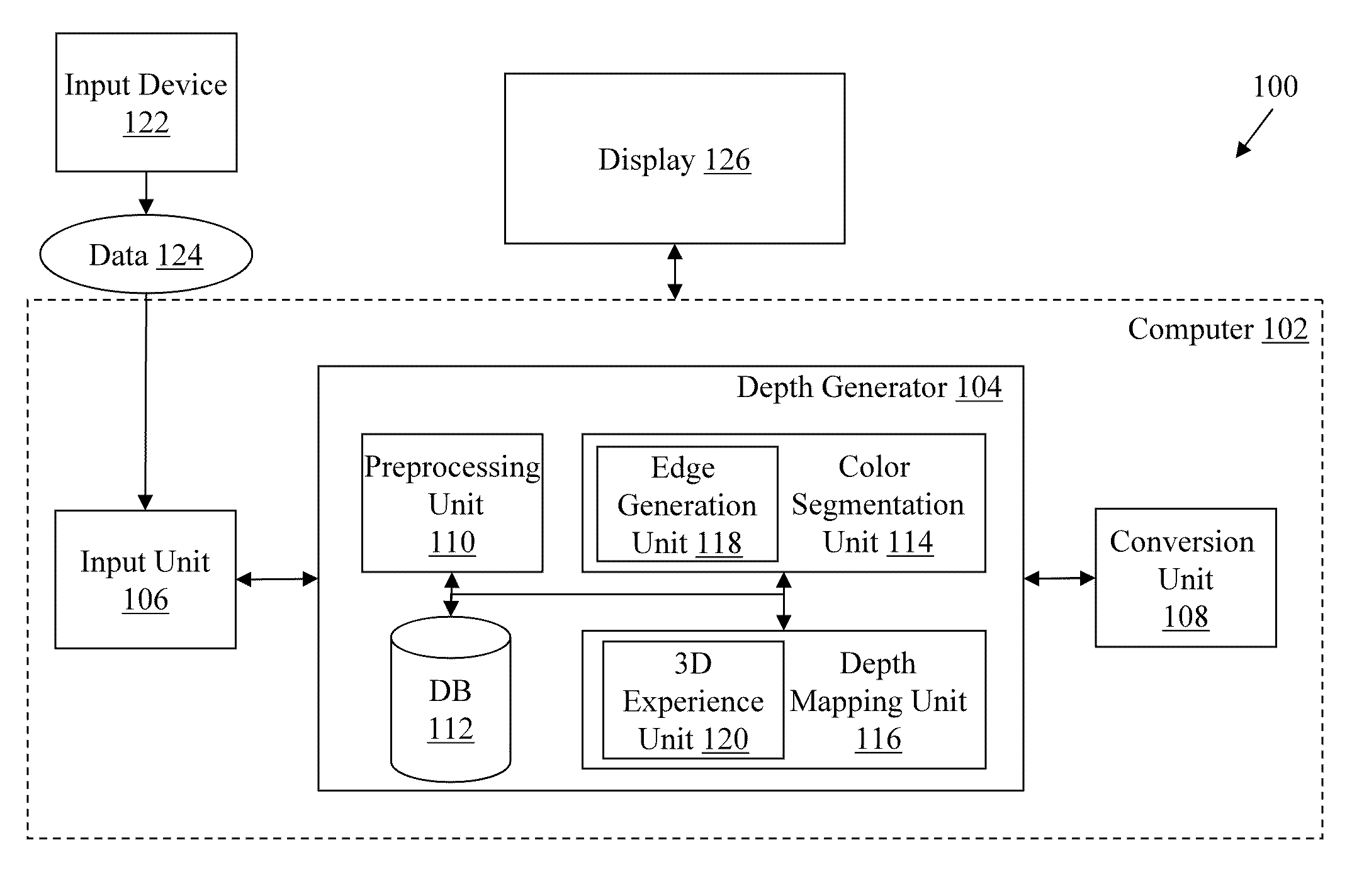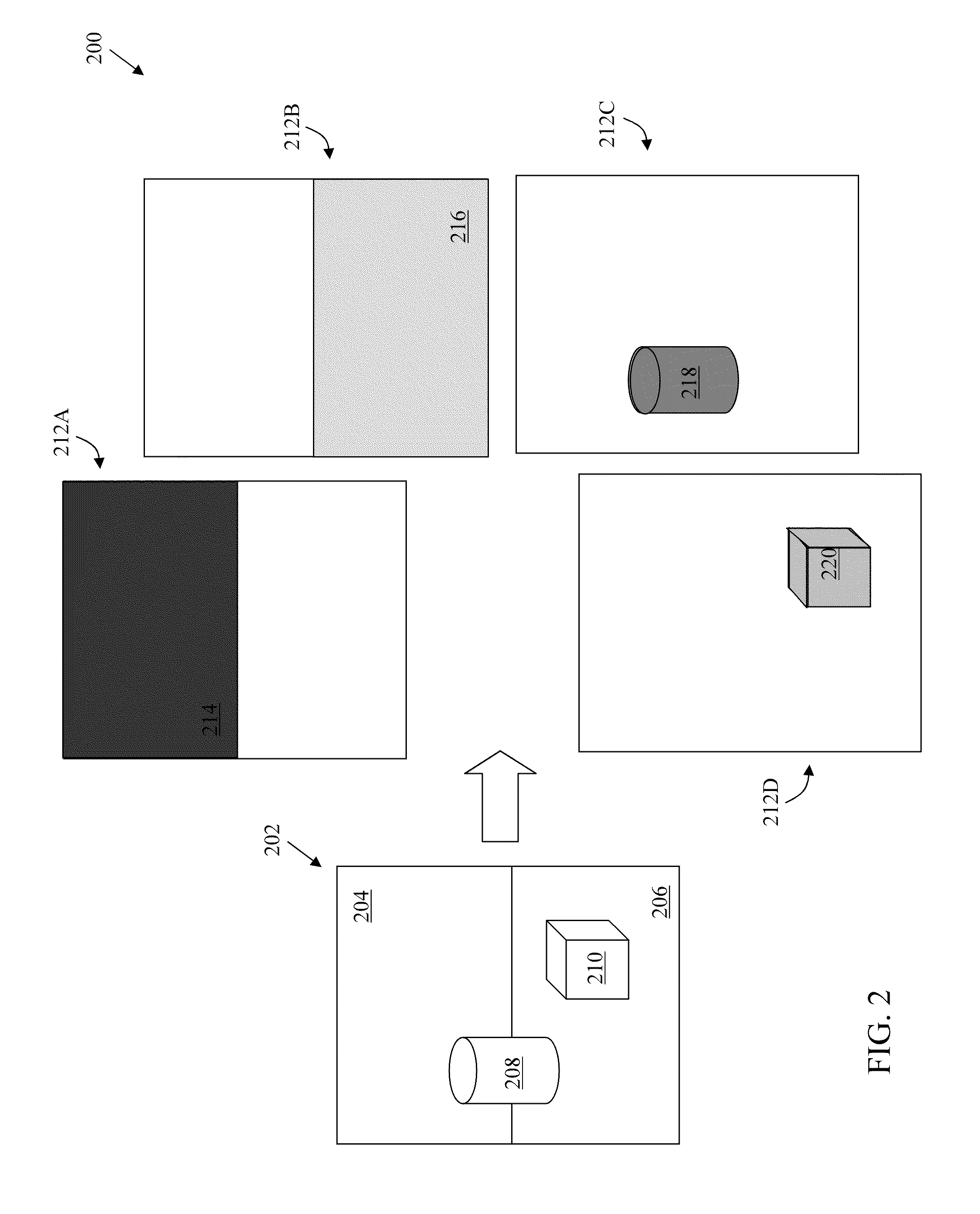Pulling keys from color segmented images
a color segmented image and key technology, applied in image enhancement, image analysis, instruments, etc., can solve the problems of time-consuming, non-trivial, complex, and expensive, and achieve the effect of reducing the time of generating boundary information
- Summary
- Abstract
- Description
- Claims
- Application Information
AI Technical Summary
Benefits of technology
Problems solved by technology
Method used
Image
Examples
Embodiment Construction
[0041]In general overview, the techniques described herein provide for automatic color segmentation of two dimensional images (e.g., frames of a motion picture), identification of object boundaries based on the color segmented frames (e.g., a Bezier map, which can be automatically adjusted and then subsequently fine-tuned), generation of an accurate depth map from two dimensional images (e.g., with a custom depth range), and then conversion of the depth map to a three dimensional image (e.g., via a stereoscopic pair). The techniques can operate on any type of two dimensional image, and can also operate on a previously generated depth map (e.g., a depth map lacking the fine-tuned details used by the current techniques).
[0042]FIG. 1 illustrates an exemplary 3D rendering system 100 according to the present invention. The 3D rendering system 100 includes computer 102. Computer 102 includes depth generator 104, an input unit 106, and a conversion unit 108. Input unit 106 is in communicat...
PUM
 Login to View More
Login to View More Abstract
Description
Claims
Application Information
 Login to View More
Login to View More - R&D
- Intellectual Property
- Life Sciences
- Materials
- Tech Scout
- Unparalleled Data Quality
- Higher Quality Content
- 60% Fewer Hallucinations
Browse by: Latest US Patents, China's latest patents, Technical Efficacy Thesaurus, Application Domain, Technology Topic, Popular Technical Reports.
© 2025 PatSnap. All rights reserved.Legal|Privacy policy|Modern Slavery Act Transparency Statement|Sitemap|About US| Contact US: help@patsnap.com



